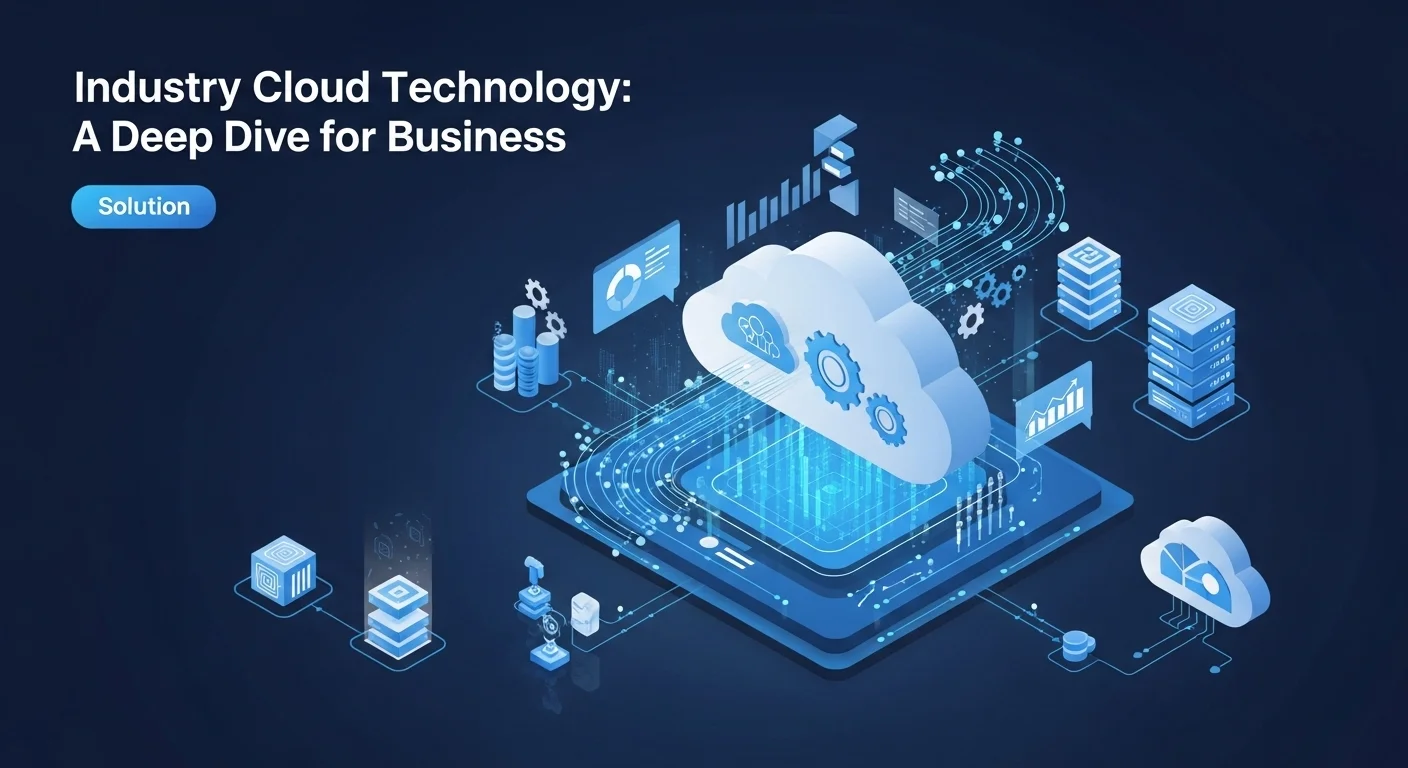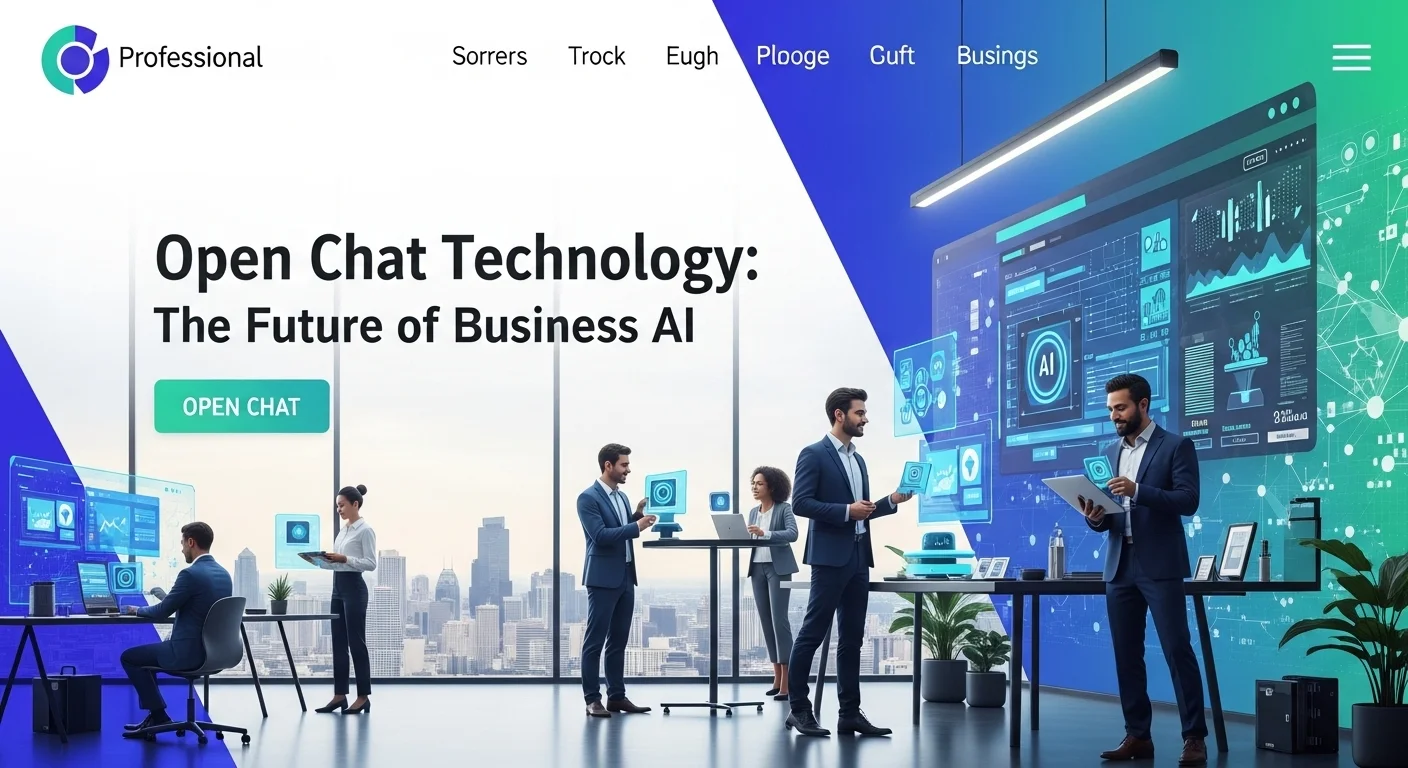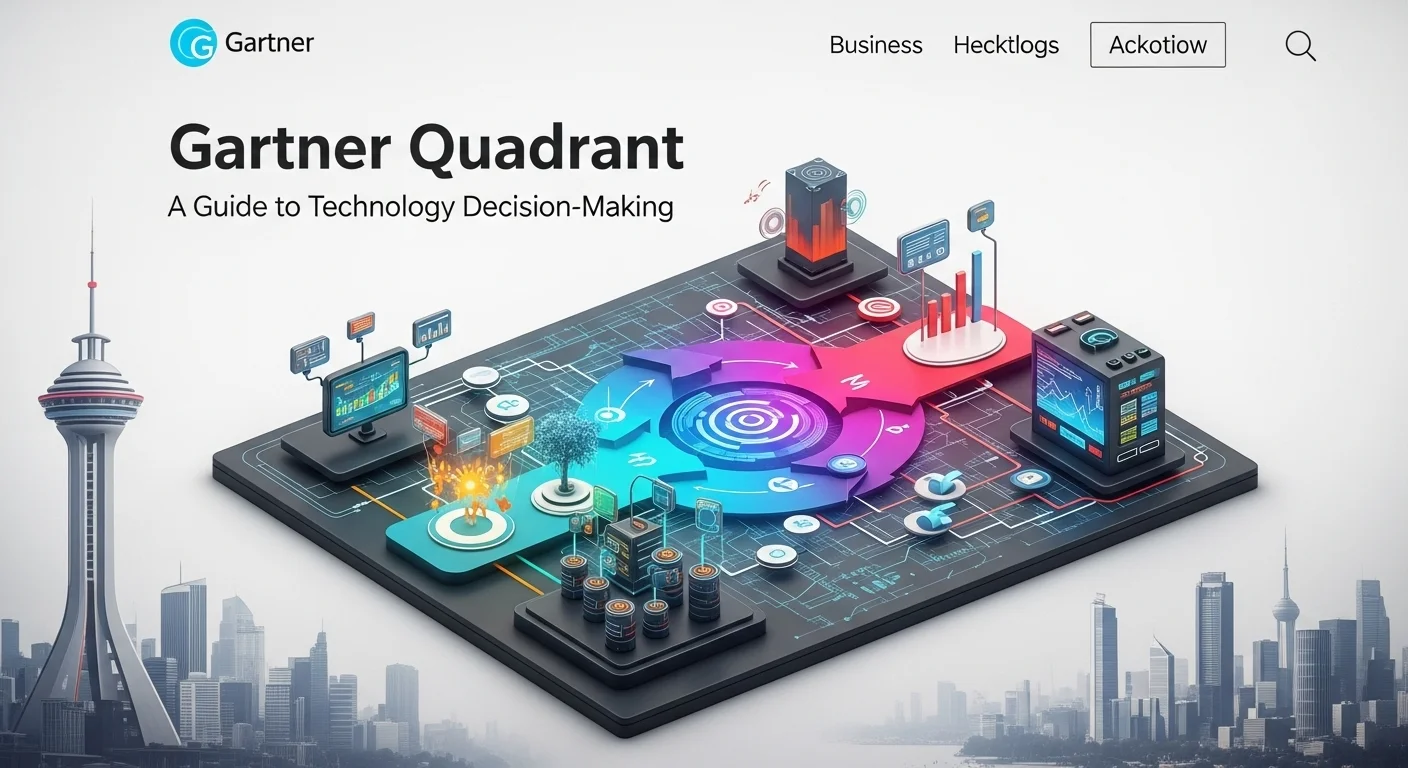Industry Cloud: The Ultimate Guide to Sector-Specific Tech

Executive Summary
For years, I've watched countless businesses wrestle with generic cloud services, trying to force a one-size-fits-all solution onto their unique operations. It was a constant struggle of customization and costly workarounds. Then came a real game-changer: the Industry Cloud. Think of it as the difference between a standard toolbox and a master mechanic's custom-built chest, where every tool is designed for a specific job. This isn't just another buzzword; it's a fundamental shift towards cloud technology that speaks your industry's language, understands your challenges, and anticipates your needs. Whether you're in manufacturing, healthcare, or finance, these specialized platforms accelerate innovation, simplify compliance, and give you a powerful competitive edge. This guide is my attempt to cut through the noise, sharing what I've learned about how to understand, choose, and implement these vertical cloud ecosystems for real, sustainable growth.
Table of Contents
Table of Contents
- What Is an Industry Cloud, Really?
- The Real-World Benefits of Going Vertical
- A Practical Example: The Manufacturing Sector
What Is an Industry Cloud, Really?
For over a decade, digital transformation has been the mantra in boardrooms everywhere. Cloud computing has been the engine driving it all, changing the very fabric of how companies work and innovate. In the early days, the cloud was a generic, horizontal offering—a massive digital utility providing computing power and storage to anyone. [8] However, as companies got smarter about using the cloud, a glaring gap became obvious: the need for solutions tailored to specific industries. This is where the Industry Cloud was born. In my experience, this evolution is one of the most significant shifts in tech. It’s no surprise that Gartner predicts a massive jump in adoption, expecting over 70% of enterprises to use industry clouds by 2027, up from less than 15% in 2023. [5]
Defining the Industry Cloud
So, what are we actually talking about? An Industry Cloud, sometimes called a vertical cloud, is essentially a suite of cloud services, tools, and applications that are pre-configured for a specific industry. [7] Unlike a generic cloud platform that gives you a blank canvas, an industry cloud platform provides a specialized toolkit. [8] I love the analogy of a generic block of clay versus a high-end model airplane kit. With the clay, you can build anything, but it takes enormous skill and effort. The kit gives you the specialized pieces and instructions to build something complex and functional right out of the box. These platforms bundle Infrastructure as a Service (IaaS), Platform as a Service (PaaS), and Software as a Service (SaaS) with purpose-built components like data models, APIs, and workflows that tackle the unique challenges and regulations of a sector. [1, 20] For instance, a healthcare cloud comes with HIPAA compliance built-in and data structures for patient records. [2, 30] A financial services cloud will have features for fraud detection and risk management already integrated. [2, 5]
The Real-World Benefits of Going Vertical
The move to Industry Clouds is a direct answer to the frustrations of generic solutions. A public cloud from a giant like AWS, Microsoft, or Google is incredibly powerful, but it doesn't intrinsically understand a manufacturer's supply chain or a hospital's patient workflow. [30] I've seen organizations spend fortunes customizing these platforms, basically reinventing the wheel every time. [8] The cloud industry saw this inefficiency and created tailored industry cloud solutions. The impact is huge. By giving you a foundation that's already 80% complete, industry clouds let you focus your energy on the final 20%—the unique innovations that make your business stand out. This dramatically speeds up transformation, slashes development costs, and makes it easier to adopt advanced tech like AI and IoT. [4, 7] This is a massive reason for the explosive cloud computing industry growth, which is expected to balloon to $3.50 trillion by 2035. [11]
Key Advantages Driving Adoption
The buzz around industry clouds is backed by real, tangible benefits that get executives and IT teams excited. These aren't just about saving a few bucks; they're about building a more agile, innovative, and resilient business.
- Faster Time-to-Value: This is the big one. I've seen teams deploy new services in weeks instead of months because the building blocks are already there. [8, 9] This agility lets them pivot quickly to meet new market demands.
- Compliance Out of the Box: For industries drowning in regulations like finance or healthcare, this is a lifesaver. Industry clouds embed security and compliance frameworks directly into the platform, making audits and reporting so much simpler. [3, 5]
- Fueling Real Innovation: By taking care of the foundational 'plumbing,' an industry cloud platform frees up your smartest people to work on what truly matters. [4] Plus, they offer curated partner ecosystems, giving you access to even more specialized tools to spark new ideas. [1, 5]
- Smarter Data Insights: These clouds come with data models that make sense for your industry. This means your data is organized in a useful context from day one, making it far easier to spot trends and derive insights. [6]
- Agility Where It Counts: All clouds scale, but industry clouds offer 'industry-relevant' scalability. This means you can quickly add a specific capability, like a new production line simulation or a new wealth management product, without a massive IT project. [3, 7]
A Practical Example: The Manufacturing Sector
Manufacturing is a perfect case study for the power of industry clouds. The world of cloud computing for manufacturing industry has moved far beyond simple data storage. [10] Today's manufacturers need to manage incredibly complex supply chains, boost factory efficiency, and embrace Industry 4.0. [17] A manufacturing-specific industry cloud platform tackles these issues directly. It can offer integrated ERP, SCM, and PLM solutions. [10, 13] For example, a manufacturer I worked with used their cloud platform to create a 'digital twin' of their factory. They could simulate new processes and identify bottlenecks before spending a dime on physical changes. They also connected IoT sensors on their machines to a predictive maintenance app, which analyzed data in real-time to prevent costly breakdowns. [10] Achieving this level of integration on a generic platform is a nightmare, but it's a standard feature of many industry cloud solutions. The result is a more efficient, data-driven operation ready to compete globally. [17] Believe me, as the cloud industry continues its incredible growth, this kind of specialization will become a necessity, not a luxury. [11, 14]

Table of Contents
Complete guide to Industry Cloud in Technology and Business Solutions
As we navigate this digital age, moving to the cloud is a given. The real question is *how*. For more and more businesses, the answer is the Industry Cloud. It's a strategic move to technology that speaks your language. This guide is my roadmap for you, covering the practical side of adopting an industry cloud platform—from picking the right vendor to a smart implementation plan, and even a peek under the hood at the tech that makes it all work. It’s all about using industry cloud solutions to get real results and ride the wave of cloud computing industry growth.
Choosing Your Industry Cloud Partner
The market is buzzing with options, from the tech giants to specialized vendors. Picking the right partner is your first and most critical decision. The big names you'll encounter are Microsoft, AWS, Google, SAP, and Oracle, and each has its own philosophy. [30]
- Microsoft Cloud for Industry: Microsoft aims to be a one-stop shop. They offer dedicated clouds for Healthcare, Retail, Manufacturing, and more, all tightly integrated with their Azure infrastructure and Dynamics 365 business apps. It's a very holistic approach. [30]
- Amazon Web Services (AWS): AWS plays to its strengths, offering powerful, industry-specific services and leveraging a massive partner network. [30] For healthcare, they have services like HealthLake for data management. Their power is in the deep customization you can achieve on their rock-solid infrastructure.
- Google Cloud: Google's angle is all about data, analytics, and AI. [30] They provide solutions that help businesses, especially in retail and manufacturing, unlock powerful insights from their data, often teaming up with partners like PwC to deliver the complete package. [30, 15]
- SAP Industry Cloud: Drawing on its deep ERP roots, SAP offers an industry cloud that beautifully extends its core business applications. It’s an open platform, which is a huge plus for companies in the cloud computing for manufacturing industry who need to integrate specialized partner apps.
- Oracle Cloud Infrastructure (OCI): Oracle focuses on delivering complete, end-to-end application suites for industries like construction and hospitality, all running on its high-performance OCI. [6] They bundle their powerful business apps (like NetSuite) with their cloud infrastructure. [6]
When I advise clients, I tell them to look past the marketing. Scrutinize case studies in your sector. Ask tough questions: How deep are their industry features? Who are their key partners? How well does it fit with the tech you already have?
A Strategic Guide to Implementation
Adopting an industry cloud platform is a business transformation project, not just an IT one. Success hinges on a clear strategy that has support from every corner of the company. [8]
- Define Your 'Why': Before anything else, pinpoint the business problems you're trying to solve. Is it about improving supply chain visibility or personalizing the customer journey? Clear goals are your north star.
- Start Small, Win Big: A 'big bang' launch is incredibly risky. I've seen the most success with a pilot project in one specific area. [24] This proves the value quickly, provides crucial lessons, and builds momentum for a wider rollout.
- Tackle Data Head-On: Migrating and integrating data is often the trickiest part. You need a solid plan to move data from old systems and ensure its quality. Modern industry clouds have great APIs and connectors, but it still requires careful planning. [8]
- Invest in Your People: A shiny new platform is useless if no one knows how to use it. Change can be hard, so invest in great communication and training. Upskilling your team is non-negotiable, as finding experts is a real challenge. [34, 37]
- Govern and Grow: Going live is the starting line, not the finish. Set up a framework to manage costs, security, and compliance. [26] Keep an eye on performance and always look for ways to optimize and adopt new features.
How It Works: Under the Hood
Understanding the architecture of an industry cloud platform helps you see why it's so valuable. It’s typically a layered cake built on a public cloud foundation:
- Foundational Cloud Services (IaaS/PaaS): The base layer is the raw power from a hyperscaler like AWS or Azure—compute, storage, and networking. This provides the muscle and security. [7]
- Industry Data Model: This is the secret sauce. A pre-built data model that understands your industry's language (e.g., 'patients' and 'claims' in healthcare). This standardized structure makes everything else easier. [5]
- Packaged Business Capabilities (PBCs): These are like Lego bricks. Modular, pre-built software components for a specific function, like 'customer onboarding' or 'predictive maintenance'. [1] You can assemble them to build new apps fast.
- APIs and Integration Layer: This is the glue. A rich set of APIs connects the platform to your other systems, third-party apps, and partners, creating a truly connected business. [8]
- Industry-Specific Applications (SaaS): The top layer is the ready-to-use software for specific tasks, like a retail merchandising system. [6]
This layered, 'composable' design is what makes the cloud industry's vertical shift so powerful. It's the perfect mix of standardization and customization, which is especially transformative for complex sectors like the cloud computing for manufacturing industry, where bridging the gap between factory floor tech and IT systems is a major challenge that these clouds are built to solve. [10, 17]

Table of Contents
Tips and strategies for Industry Cloud to improve your Technology experience
Making the leap to an industry cloud platform is a brilliant strategic move, but getting the most out of it requires more than just flipping a switch. It takes a forward-thinking approach that embraces best practices and anticipates challenges. Here, I want to share some practical tips and advanced strategies I've learned over the years. These will help you maximize your return on investment and ensure your industry cloud becomes a sustainable engine for growth in the fast-moving cloud industry.
Pro Tips for Maximizing Your ROI
Getting a great return from your industry cloud depends on smart planning and constant refinement. Here are some best practices I always recommend:
- Get Executive Buy-In: Make sure the project is championed by the C-suite and tied directly to strategic business goals. [8] The most successful deployments I've seen were led by the business, with IT as a key partner. Frame everything in terms of business outcomes, not tech specs.
- Lean on the Ecosystem: An industry cloud platform is more than software; it's a community of partners and developers. [1] I always tell my clients to explore the app marketplaces. You can often find a ready-made industry cloud solution that solves a niche problem, saving you a fortune in development costs.
- Treat Data as Gold: Your industry cloud will become a treasure trove of valuable, structured data. Treat it like the strategic asset it is. Invest in data governance and quality, and use the platform's built-in AI/ML tools to find insights that can drive your business forward. [6, 12]
- Think Like a Builder, Not a Buyer: Embrace a 'composable' mindset. Instead of thinking about big, monolithic applications, think about building with modular business capabilities. [1, 24] This agility allows you to quickly assemble and reconfigure solutions as your business needs change.
- Master Your Cloud Costs (FinOps): Cloud bills can get out of hand if you're not careful. [26] Adopt FinOps (Cloud Financial Operations) principles from day one. Use the cost management tools to monitor spending, set budgets, and optimize everything. Financial discipline is key.
Navigating Common Challenges
The journey to the industry cloud is powerful, but it's not without a few bumps in the road. Being prepared for these common challenges can make all the difference:
- The 'Vendor Lock-in' Fear: It's a valid concern. By nature, these platforms create tight integration with one provider. To mitigate this, I advise choosing providers built on open standards with strong API access and clear data export policies. A multi-cloud strategy can also provide a healthy balance. [16, 36]
- The 'Digital Sameness' Trap: If everyone uses the same platform, how do you stand out? The key is focusing your innovation on the 'last mile'—the unique customer experiences and proprietary business logic that define your brand. The platform is the foundation; your creativity is the differentiator. [16]
- The Skills Gap Is Real: Finding skilled cloud professionals is tough. [34, 37] My best advice is to invest heavily in training your own people. Also, don't be afraid to bring in certified partners for the initial setup. Their expertise is worth its weight in gold.
- The Integration Puzzle: Connecting a new platform to decades of legacy systems can be a headache. [18] Do a thorough analysis of your existing tech and create a phased integration plan. Tackle the most critical connections first.
The Future of Industry Clouds: AI, Sustainability, and Beyond
The cloud computing industry growth shows no signs of slowing, and the future for industry clouds is incredibly bright. Here are the trends I'm most excited about:
- Generative AI at the Core: AI is becoming a fundamental part of these platforms. [5, 25] Soon, we'll see generative AI tools that can draft clinical summaries in healthcare, create marketing copy for retail, or even write code for new financial products, all with a simple prompt. [30] This will be a massive productivity booster. [12, 28]
- True Hyper-Personalization: By combining industry data with smart AI, platforms will deliver incredibly personalized experiences. Imagine a manufacturing platform giving custom instructions to a technician based on their skill level, all in real time. [38]
- Sustainability as a Standard Feature: As ESG becomes a priority, industry clouds will include sustainability dashboards. A cloud computing for manufacturing industry platform might track carbon emissions per product, helping companies meet their green goals. [25]
- The Rise of 'Ecosystem Clouds': The next step is a cloud that connects related industries. [1, 3] Picture a healthcare cloud talking seamlessly with a financial services cloud and an insurance cloud to handle billing and claims. This creates a frictionless experience for everyone.
To keep up with the fast pace of innovation, I often recommend resources like the MIT Technology Review for reliable insights on emerging tech. By staying informed and adopting a strategic approach, you can use your industry cloud solutions not just to keep up, but to lead the way.
Expert Reviews & Testimonials
Sarah Johnson, Business Owner ⭐⭐⭐⭐
As a business owner in logistics, I found this very insightful. The analogy of the specialized toolkit versus a generic one really clicked. It's a great starting point for someone like me.
Mike Chen, IT Consultant ⭐⭐⭐⭐
Solid overview for IT consultants. It armed me with the key differences between providers like AWS and Microsoft, which is crucial for advising my clients. A bit more on the challenges of integrating with older legacy tech would have been a bonus, but it's very useful.
Emma Davis, Tech Expert ⭐⭐⭐⭐⭐
Finally, an article that cuts through the marketing fluff! The explanation of composable architecture and Packaged Business Capabilities (PBCs) was crystal clear and practical. This has been invaluable for my specialization work in cloud finance. Perfectly explained.



